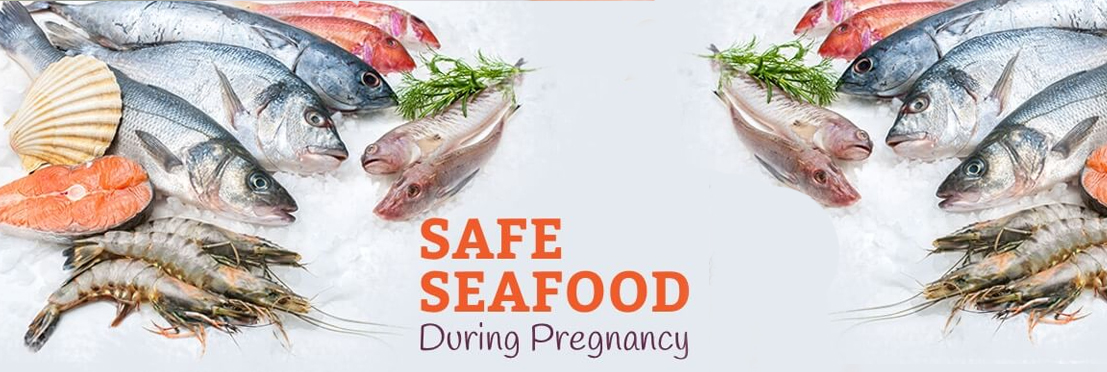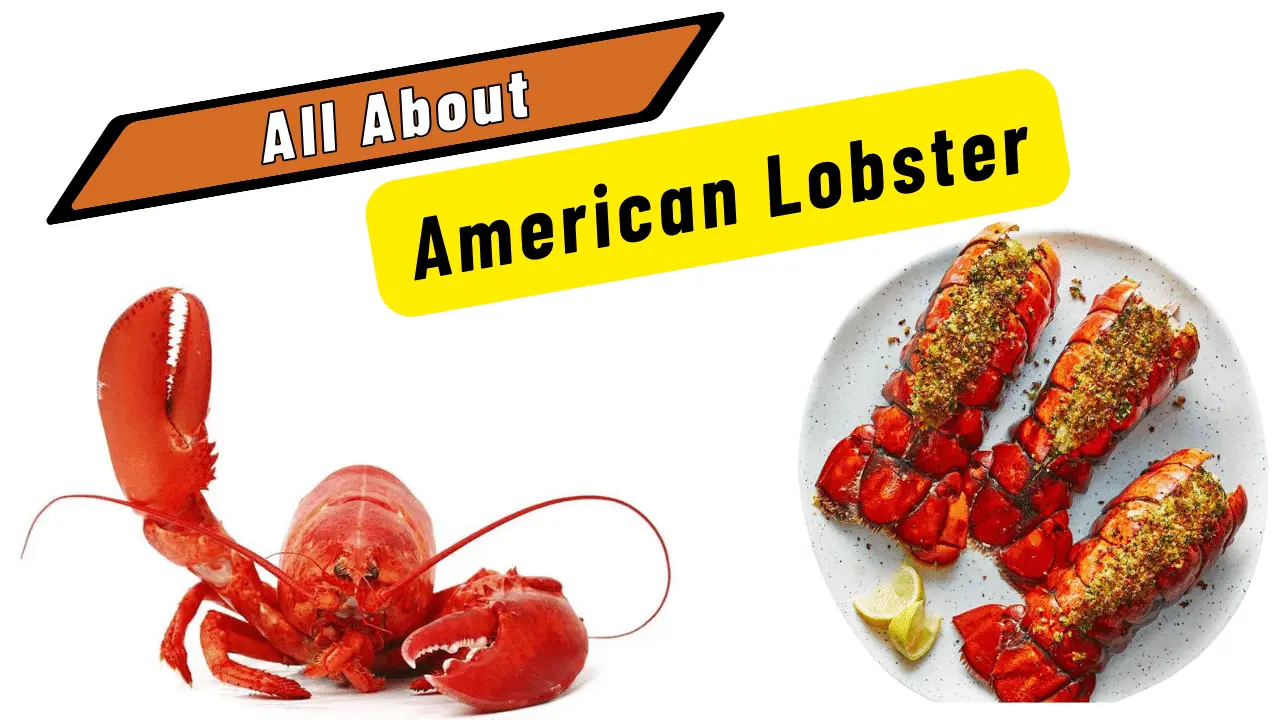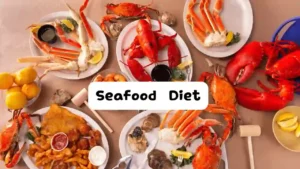
All About American Lobster

The American lobster, also known as the Maine lobster, is a sizable, clawed crustacean that supports a substantial and profitable fishery across its habitat. The American lobster is truly remarkable! It can weigh as much as 44 pounds (20 kg) and is the largest crustacean in the world by weight. With its ten legs and spiny exoskeleton, it’s a resilient creature. While most American lobsters are rusty brown, fishers and scientists have occasionally spotted individuals in a wide variety of strange colors and patterns, including bright blue, green, mottled, and even some with different colors on each side. This species shares a close relation with the European lobster, but it is only distantly related to the spiny lobsters found in the Caribbean and California, all of which are also commercially targeted species. These lobsters are highly sought after and are a valuable catch for fishermen, contributing significantly to the fishing industry. Each species possesses its own distinct traits, but they all hold a vital place in the commercial fishing sector.During the day, American lobsters stay hidden in rocky reef habitats, but as twilight falls and night sets in, they become more active, foraging for various prey like invertebrates, decaying organic matter, and algae. They’re not picky eaters and will devour almost anything they come across. Adult lobsters can fall prey to large fishes and octopuses, while juveniles are targeted by a wider variety of fishes. Unlike many aquatic species, American lobsters reproduce through internal fertilization. After the male passes his sperm to the female, she stores the fertilized eggs on her body’s underside until they hatch. It’s like a secret underwater world! The American lobster, with its impressive size and distinctive features, continues to be a prized catch for fishermen and a significant part of the marine ecosystem.
- Molts: The American lobster goes through 20-25 molts before reaching maturity, highlighting its amazing growth process. This shedding of the exoskeleton allows for the formation of a new and larger exoskeleton, facilitating the lobster’s development and maturation.
- Eggs: Female American lobsters are prolific reproducers, laying an impressive 11,000 eggs, a number that rivals many fish species and contributes to the species’ abundance in its habitat.
- Speed: The American lobster is no slouch in speed, reaching 14 km/hour, outpacing the average human running speed. This burst of speed showcases the lobster’s agility and adaptability in its aquatic environment.
- Claws: This impressive crustacean boasts a total of 5 claws, with one pair for crushing, two for grabbing, and one for grooming, showcasing its adaptability and versatility in its environment.
- Legs: With 10 legs in total, the American lobster utilizes 3 pairs for walking, 2 pairs for swimming, and 1 pair for eating, showcases its adaptability and versatility in its habitat, highlighting the unique and specialized appendages that enable it to thrive in its environment.
- 500,000 taste buds: American lobsters have an impressive 500,000 taste buds, more than any land animal, which enhances their ability to detect food in the ocean.
- 0 predators: Adult lobsters face few natural threats in deep waters, allowing them to thrive without many predators. This unique advantage contributes to their ability to thrive and survive in their ocean habitat.
- 1-year memory: American lobsters can retain spatial awareness for up to a year, aiding them in finding shelters and food in their environment.
- 1st recorded human consumption: Native Americans were the first to consume American lobsters over 5,000 years ago, marking the beginning of their significance in the seafood industry.
- Market value: The annual harvest of American lobsters in the US is valued at a staggering $515 million, with prices reaching as high as $108 per pound. This demonstrates the significant economic impact of the American lobster industry.
- Demand Drivers: American lobsters are sought after for their iconic dish status, with a growing global consumption driven by their popularity and rising disposable incomes.
- Supply: Sustainable harvest practices in Maine, Massachusetts, and Rhode Island ensure a consistent and reliable supply of American lobsters to meet the demand.
- Seasonality: The peak season for American lobsters occurs during the summer months, providing an opportunity for premium pricing due to increased demand.
Sure thing! Here are the detailed bullet points: - Versatility: American lobsters offer diverse product options for restaurants and retailers, ranging from live lobsters to frozen tails, catering to a variety of culinary preferences and needs.
- Regulations: Extensive quotas and size restrictions are in place to maintain the health of the lobster population and ensure market stability, contributing to sustainable harvesting practices.
- Marketing: Branding opportunities in the American lobster industry leverage its rich tradition and culinary appeal, allowing for effective promotion and differentiation in the market.
- Challenges: The American lobster industry faces challenges such as climate change, rising costs, and fluctuating demand, necessitating constant adaptation to ensure sustainability and success.
- Estimated total population: The estimated total population of American lobsters off the coast of North America is roughly 500 million, with a concentration in the Gulf of Maine. This significant population supports a thriving and sustainable lobster industry.
- Annual harvest: 119 million pounds in 2022, a regulated and sustainable rate. This ensures the long term health of the population.
- Population fluctuations: The population of American lobsters can fluctuate due to natural cycles and environmental factors such as temperature. These variations are important to consider in understanding the dynamics of the American lobster industry.
- Conversation efforts: To stabilize populations, strict quotas, minimum size limits, and protected areas are implemented as conservation efforts. These measures ensure the long-term sustainability of the American lobster population, supporting the industry and ecosystem.
- Positive sign: There are encouraging signs as recent population assessments suggest stability in most regions, indicating positive developments for the American lobster population. These findings provide optimism for the sustainability of this valuable species and the seafood industry that relies on it.
- Studies: Researchers conduct continuous studies and surveys to monitor the well-being of American lobster populations, providing essential data to guide management strategies. This ongoing research plays a crucial role in making informed decisions to ensure the long-term sustainability of this valuable species, benefiting both the ecosystem and the seafood industry.
| Year | Sold In Pounds | Revenue | Per Lb Price |
|---|---|---|---|
| 2015 | 2,051,424 lb | $38,192,116 | $18.62 |
| 2016 | 5,098,685 lb | $84,005,977 | $16.48 |
| 2017 | 5,060,533 lb | $83,526,154 | $16.50 |
| 2018 | 8,394,648 lb | $166,857,393 | $22.21 |
| 2019 | 8,265,053 lb | $169,417,032 | $20.50 |
| 2020 | 9,335,039 lb | $171,872,059 | $18.42 |
| 2021 | 11,407,093 lb | $265,864,113 | $23.28 |
| 2022 | 10,931,510 lb | $242,569,606 | $19.86 |
Life cycle
The life cycle of the American lobster is truly fascinating. It all begins as a tiny, drifting larva, braving ocean currents before settling among rocky coves in cool, shallow waters, ideally around 35-50°F. These secret shelters become their playground, where they molt their spiny shells up to 25 times to reach maturity. This is also where the mating dances unfold, with the dominant male depositing a sticky packet on the female’s underside, fertilizing her thousands of eggs. However, this underwater drama faces numerous threats: overfishing depletes their ranks, warming waters push them deeper, and diseases lurk, casting a shadow on the future of this resilient red warrior. It’s a delicate balance that shapes the life and survival of these incredible creatures.
Climate change and global warming
Threats
Permitting
As of October 26, 2023, there is no active process for obtaining a new federal lobster permit for the American Lobster fishery. This is due to a moratorium that has been in place since 1999 and has been indefinitely extended by the National Oceanic and Atmospheric Administration (NOAA Fisheries).
However, there are still a few avenues to consider if you’re interested in lobster fishing:

- Purchase an existing permit: You can explore the option of acquiring an existing federal lobster permit by purchasing it from a retiring or exiting lobsterman. While these permits are not officially traded, you may find them advertised on industry websites or forums by brokers or fishermen. It’s important to note that the cost of these permits can vary significantly, depending on the assigned quota and the current market conditions. Therefore, it’s essential to carefully consider the financial implications before pursuing this avenue.
- Join limited excess program: You could consider participating in a limited access program offered by certain states, such as Maine and Massachusetts, for their state-issued lobster permits. These programs often involve a lottery system or specific residency and experience qualifications for applicants. It’s advisable to visit the wildlife agency websites of these states to gather details about these programs. By exploring this option, you may have the opportunity to secure a lobster permit through the structured framework provided by these state programs.
- Work as crew member or captain: You could also consider gaining experience and potential future access to the fishery by working as a crew member on a lobster boat. Some captains may even provide opportunities for career progression to eventually captain the vessel. This hands-on experience presents a valuable opportunity to learn the trade and build connections within the industry, setting the stage for potential future growth in the field.
- Keep an eye on any future updates: Although the moratorium is currently enforced, there’s always a chance it could be lifted later on. NOAA Fisheries consistently evaluates the fishery’s status and may modify regulations following population assessments and public feedback. Staying up to date with fishery developments will enable you to capitalize on potential future chances to acquire a permit.
Existing permit
In 2017, there were about 3,288 federal lobster permits, and some of them were in Confirmation of Permit History (CPH) status because the vessels associated with them were inactive at that time.

Nutritional facts
- Low in fat and calories: A 3oz cooked lobster tail contains approximately 80 calories and 1g of fat, making it an excellent choice for those looking for a lean protein source.
- High in protein: The same 3oz tail is packed with an impressive 20g of protein, which is crucial for muscle building and provides a feeling of fullness.
- Excellent source of vitamins and minerals: Lobster is rich in B12, which is essential for nerve function, selenium, known for boosting immunity, and copper, which supports bone health.
- High in omega-3 fatty acids: Lobster is high in healthy fats, particularly EPA and DHA, which contribute to heart health, brain function, and reducing inflammation.
Important consideration
- Sodium content: Lobster can be high in sodium, especially depending on preparation methods (steaming,boiling vs. cooking with high-sodium sauces). It’s important to be mindful of this for those who need to monitor their sodium intake.
- Cholesterol: While lobster has lower cholesterol levels compared to some other seafood, it’s still essential to moderate intake, especially for individuals with high cholesterol levels.
- Potential allergens: It’s crucial to be aware that some individuals may have allergies to shellfish, including lobster. Allergic reactions can range from hives and difficulty breathing to nausea, so it’s important to consider this when including lobster in a meal.
Cultural significance
The American lobster holds a special place in the heart of American culture. It’s not just a plate adornment; it’s a woven thread in the tapestry of American life. From Melville’s Moby Dick to Rockwell’s iconic “Rockport Post Office,” it has inspired artists and authors for centuries. The tight-knit lobstering communities, braving stormy seas and passing down generations-old techniques, embody resilience and hard work. Its scarlet shell shimmers with prosperity, serving as a good luck charm at seaside dinners and festive clam bakes. The lobster is more than a meal; it’s a symbol of heritage, a taste of adventure, and a story waiting to be told in every crack and claw. The cultural significance of the American lobster runs deep, intertwining with the history, art, and traditions of the nation, creating a rich and enduring legacy that continues to inspire and captivate.
5 Fun facts about American lobster
- American lobsters possess three stomachs, one for grinding food with internal teeth, another for digesting the food, and a third for passing the undigested food. This unique digestive system allows them to efficiently process their meals.
- When lobsters are pregnant, they are referred to as “in berry” due to the eggs on their bellies resembling raspberries.
- Out of all the lobsters that enter traps, only 6 percent actually get caught. The majority of them manage to eat the bait and then find their way out, escaping the trap.
- American lobsters are often mythically described as immortal due to their ability to live exceptionally long lives and continue growing with each molt.
- American lobsters possess two urinary bladders in their heads. They utilize urine to entice mates and notify fellow lobsters of their location. It’s a unique method of communication within their community!
Year | Commercial Landings | Imports (1) | Total | Exports (2) | Total Supply |
2016 | 159,433 | 193,925 | 353,358.00 | 122,816 | 230,542 |
2017 | 137,075 | 174,924 | 311,999.00 | 110,785 | 201,214 |
2018 | 147,624 | 166,255 | 313,879.00 | 117,629 | 196,250 |
2019 | 127,674 | 170,117 | 297,791.00 | 93,081 | 204,710 |
2020 | 120,939 | 141,590 | 262,529.00 | 75,740 | 186,789 |
2021 | 135,173 | 203,926 | 339,099.00 | 95,448 | 243,651 |


How to Crack Lobster | Tips and Tricks

Sustainable Seafood Practices: From Ocean to Table

Common Seafood Mistakes To Avoid In The Kitchen

Seafood Balanced Diet: Tips for Healthy Eating




